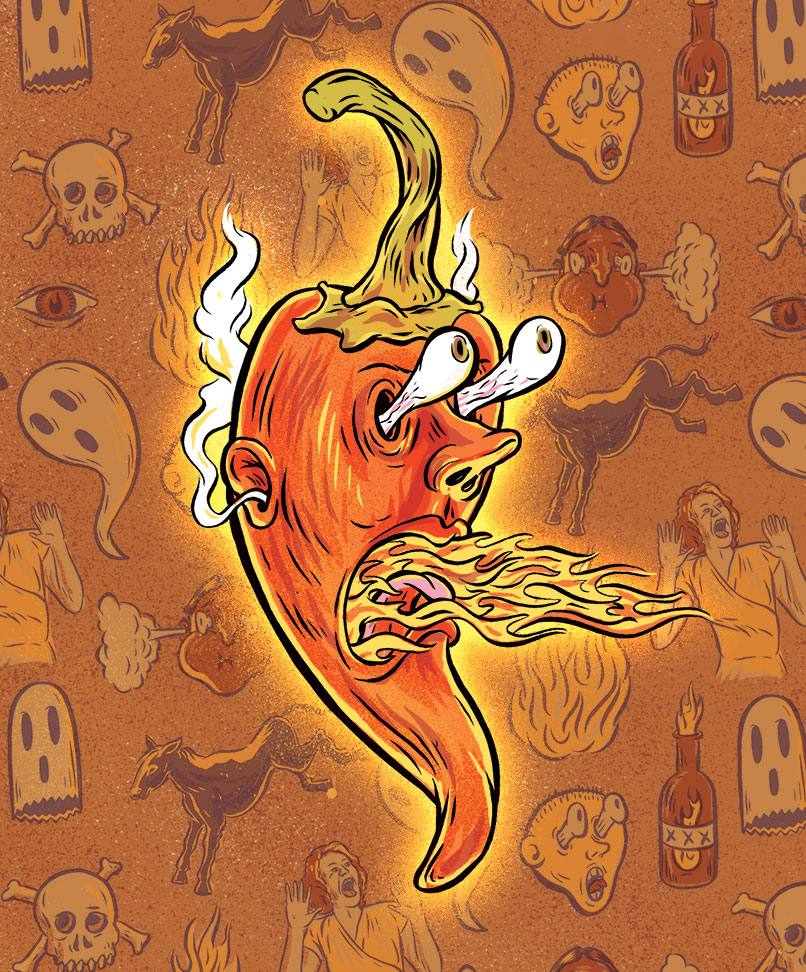Right now, under some lights in my basement, sit several dozen pots of soil. Out of each sprouts a small seedling, only a few millimeters high — a humble beginning for plants that will grow to produce one of the hottest peppers on the face of the Earth: the Bhut Jolokia, commonly known as the ghost chili.
The Bhut Jolokia first came to my attention in 2007, when Guinness World Records crowned it “world’s hottest chili pepper” (though it’s since been deposed by another). Certified at well over 1,000,000 Scoville heat units, the fruit from this plant is 125 times hotter than the spiciest jalapeño.
At the time, tracking down seed stock for the pepper was a challenge. I was lucky enough to have a friend of a friend who worked for New Mexico State University’s Chile Pepper Institute (chilepepperinstitute.org).
These days, seeds can be purchased from online retailers or from private growers on Amazon and eBay. There are even “just add water” kits. Skip these. Chili peppers are easy to grow — once you know a few tips.
Materials and Tools
- Bhut Jolokia chili pepper seeds — available online
- Seed starting tray — with soil
- Pots, 3″ or 4″ (one per seedling)
- Fertilizer, nitrogen rich, such as 10-5-5 or composted manure
- Fertilizer, 5-10-10
- Heating pad
- Grow lights
- Digital oven thermometer
Illustrated by Evan Hughes

MAKE Volume 33 features our special Software for Makers section covering apps for circuit board design, 3D design and printing, microcontrollers, and programming for kids. Also, meet our new Arduino-powered Rovera robot and get started with Raspberry Pi. As usual, you’ll also find fascinating makers inside, like the maniacs on our cover, the hackers behind the popular Power Racing Series events at Maker Faire.
Try your hand at 22 great DIY projects, like the Optical Tremolo guitar effects box, "Panjolele" cake-pan ukelele, Wii Nunchuk Mouse, CNC joinery tricks, treat-dispensing cat scratching post, laser-cut flexing wooden books, sake brewing, growing incredibly hot “ghost chili” peppers, and much more.
On newsstands now, by subscription, or available in the Maker Shed

















